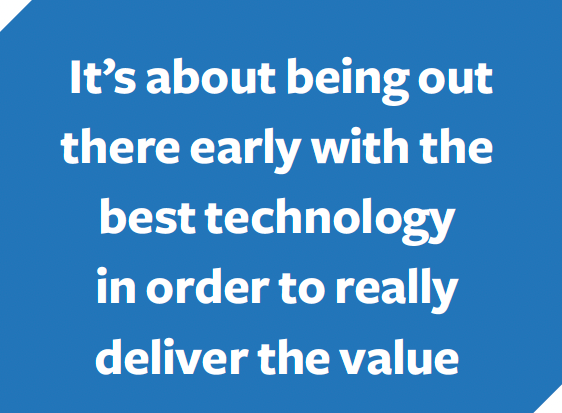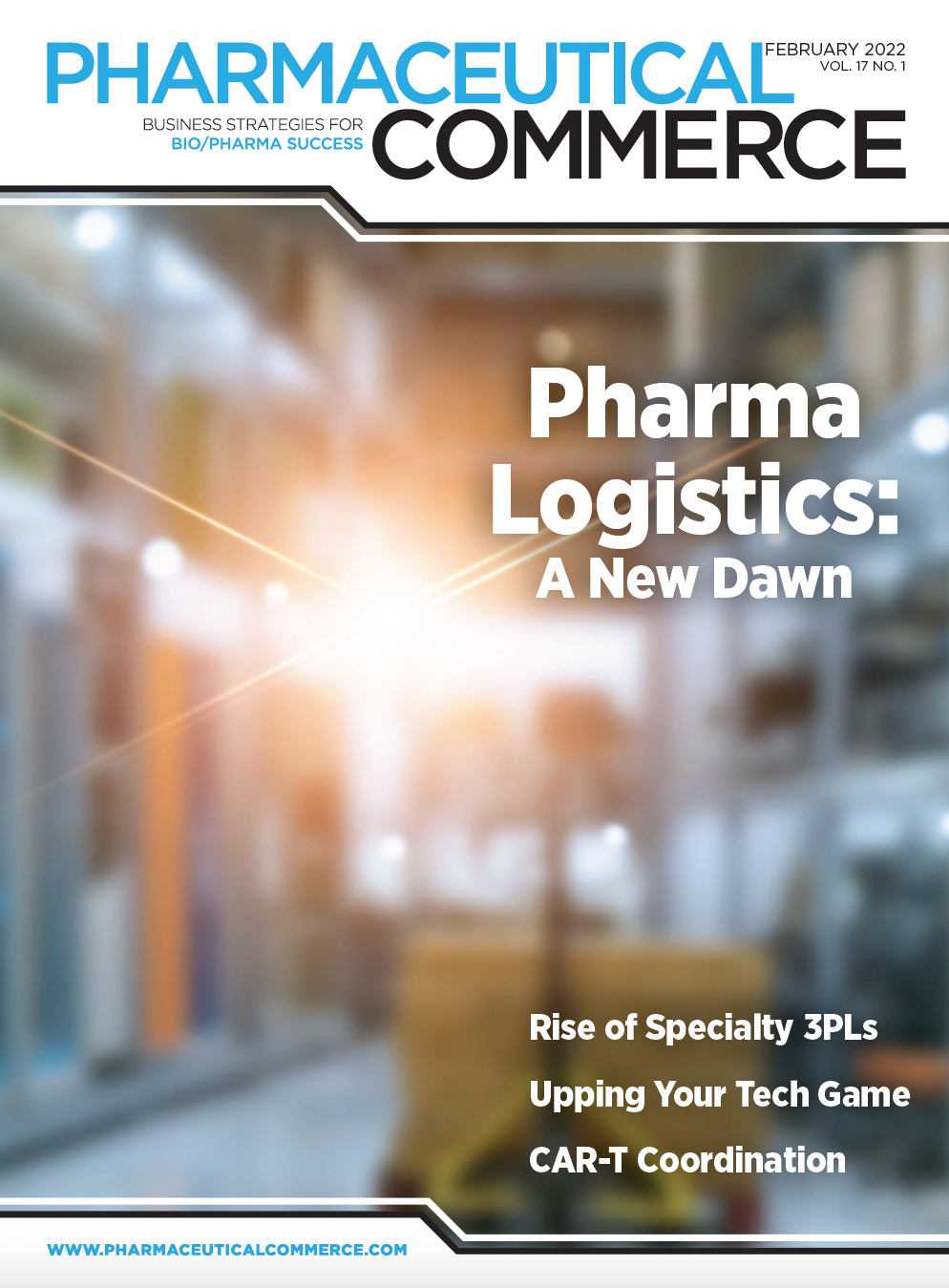For Industry in Flux, is M&A Jolt in Store?
A conversation with Michael Abrams, co-founder and managing partner, Numerof & Associates
Prospects of an M&A resurgence—or indeed a rebound to more “normal” dealmaking levels pre-Covid—has been a hot topic entering the new year when forecasting biopharma business fortunes. In fact, EY finds in its new M&A Firepower report that only 9% of biopharma firepower—defined as a company’s capacity to do M&A based on the strength of its balance sheet—was deployed on M&A in 2021. Hence, substantial capital is at the ready to allocate to M&A and strategic partnership-type pursuits this year. The goal is twofold: access new products, innovation and talent, while offsetting risks from patent expirations, pricing pressures and other headwinds; ultimately, of course, to secure future, value-driven revenue channels. Other advisors in healthcare and the life sciences, such as the global consultancy Numerof & Associates, agree that an expected surge in dealmaking is in the offing, citing contributing factors such as the impending federal legislation on drug pricing in the US.
“We describe the healthcare environment as an industry in transition on steroids, if you will,” says Michael Abrams, co-founder and managing partner of Numerof. “The pace of technology, the changes in regulation, the changes in the customer base—patients are becoming consumers. All of that is huge.” Then, throw in the pandemic for good measure, and “we’re not going to go back to where we were,” Abrams adds.
The ability, therefore, for drugmakers, and their supply-chain partners, to adapt to the demands of the changing climate and implement a clear commercial strategy accordingly, is critical. Pharmaceutical Commerce caught up with Abrams to discuss that and more—and dig deeper into the broader M&A scene.
1. What drivers are you seeing now in the biopharma/healthcare space that make you believe there will be an uptick in larger M&A dealmaking this year?
I think there is more going on than some people in the media have really pointed to. Broadly speaking, the risks in the business environment are increasing for the sector, and I see that as the underlying driver for M&A activity in ’22; because it’s shaping up to be a risky year for pharmaceutical manufacturers in particular. One of the factors is that the healthcare sector is under increased financial pressure due to the pandemic. They’ve been impacted heavily from things like staffing problems and higher patient counts than they’re really geared for. Many of them have had to curtail the high-margin activities that usually shore up their financial health.
The other issue with healthcare delivery is that consolidated organizations are beginning to use their increased size to obtain more power in the market, which means every supplier, not least of which is pharmaceuticals, is going to feel the pain.
Then the other factor, I think, is a political one—the [US midterm] elections coming up are going to spotlight the issue of drug pricing with a level of intensity that will probably be exceptional. There are other things that are also on the radar that are policy threats—corporate and global tax reforms, the FTC’s new focus on regulating M&A; we’ll see what those turn out to look like, but they’re out there.
All of these threats raise the risk for the industry and increase the attraction of M&A to enhance market clout and to provide deeper pockets to weather competitive and policy shocks.

2. At the same time, small and mid-sized biopharma in the last couple years, amid the pandemic, have seemed to be at an advantage in initiating a lot of deals in more of a seller’s market (Evaluate Vantage reports that volume of takeovers and spend by these companies hit at least a five-year high in 2021). Do you think that will continue?
I don’t necessarily see a massive bias toward larger deals. Larger deals come with larger risk and smaller deals, generally speaking, come with smaller risk because you know more precisely what you’re buying. With larger deals, it’s really about the strategic fit at the portfolio level, or even at the business level, and that can’t be detailed and nailed down nearly as precisely as you can when you’re buying a single or a couple of assets.
I don’t see that really changing the nature of what will happen going forward. When the pandemic was in full force, that did tend to make [larger] companies a little more conservative. And that perhaps trended to smaller deals for that reason. But it’s really more about individual companies and what comes their way in terms of opportunities. Because, at the end of the day, it’s about products. It’s about being out there early with the best technology in order to really deliver the value that nets the margins.

3. According to CB Insights, funding for digital health startups grew 79% last year and M&A activity jumped 44% from 2020 levels. Do you see more pharma deals picking up around digital health types of applications?
There is tremendous interest in that space and I do see more deals around digital health; I see more deals around healthcare services. That’s been exploding. Big pharma has a lot of capital that they can use to further their acquisition activities in areas like these. Some of them have also freed up cash because they narrowed their portfolio and spun off parts of it, deciding that they want to be more focused on a particular area. It’s time to put the cash that they realized to work and hopefully make themselves a more innovative operation as consequence.
4. More specifically exploring the implications from federal legislation on drug pricing, including provisions in Biden’s Build Back Better (BBB) plan to lower Rx prices, have those developments already started prompting a spending spree among large pharmas?
I don’t know that it’s prompting a spending spree, but it’s not as though the big pharmas have ignored the popular sentiment. There are very few issues that have such strong support from a population point of view, from a bipartisan point of view. Whether this is right or wrong, everybody agrees that drugs cost too much. There is tremendous support to do something, we just haven’t been able to agree on what exactly to do.
The proposed legislation in BBB may not survive in its initial form, but given the level of support for recognition of the problem, it wouldn’t be a shock if some sort of price controls came out the other end of this process.
If we do wind up seeing additional controls that resemble what’s been proposed, it would certainly increase the importance of those first few critical years in the market when a new product is exempted from price controls. That would incentivize companies to increase their go-to-market entry pricing in order to compensate for the price concessions they might be forced to make later in the product lifecycle. It’s a bit of a balloon problem—squeeze it here, it expands over there.
5. Would those controls compel some companies to look for quick acquisitions?
I think it would put that much more pressure on companies to be early in the market with the latest technology, because that’s where they can collect a premium for being there and offering the value, assuming the value is really there.
6. Do you see these developments—as you alluded to, under the proposal, starting in 2023, Medicaid price negotiations could begin on expensive drugs: treatments for cancer, rheumatoid arthritis and others—giving companies the impetus to protect cash reserves by targeting the smaller deals that have been more prevalent during the pandemic, over larger ones?
I don’t see that as being a big factor in building cash reserves. There is enough free cash flow out there that it probably would not put a dent in efforts to acquire new technology, if that technology appeals to a potential buyer to have important implications for their future commercial success. That’s always been the go-to route, and I don’t see that model changing.
Cash reserves right now are so large that I just don’t see it making a meaningful difference in what they have to spend on acquisitions. I think there’s a bit of pent-up demand even now—even though M&A last year was not nearly as depressed as the prior year.
7. What about factors that emerged in recent months around the Covid Omicron variant? Did that impact board M&A decision-making in pharma, with the thought being that before Omicron, it was starting to look like large pharma players who spent the better part of the last two years working on pandemic relief could start to shift focus back to dealmaking?
Covid made boards certainly more conservative in ’20, and even though ’21 was a bigger M&A year than ’20, they were still being careful and keeping their acquisitions a little on the smaller side—not really making the big bets. I think that was a function of uncertainty. It’s hard to commit a big chunk of capital to an acquisition when you’re not sure that the sky won’t fall next week.

I think with Omicron I do feel like we have more predictability into the future, and that makes it more feasible, I believe, to commit capital to growth at this point than it has historically [during the pandemic]. I think we’ll see more attention to that, and that’s at least partly behind the M&A surge that is generally expected in ’22.
8. Does Numerof & Associates examine M&A and other business trends in pharma subsegments such as those in logistics/supply chain? What related trends are you seeing in those areas?
We do—we support clients, for example, in the distribution space. They’re all about small margins, big volume—and they’re feeling squeezed. Like most pharma players, when they’re feeling the pressure, they look for ways to either increase their margins by providing additional value, or they look to see what adjacent spaces they can enter where they can utilize the capabilities they’ve already developed—but in an area that isn’t quite subject to the same level of pressure.
The pandemic has upended so many assumptions. One of them in particular being relevant to distribution is the whole “just-in-time” idea. The assumptions guiding that idea, historically, suddenly no longer hold; so you can’t count on that going forward. That means going back to the strategic drawing board, if you will.
9. As a result, is it tougher now for your clients in pharma distribution to differentiate their services, such as “just-in-time” delivery, for example, from their competitors?
I think it means going back and examining the assumptions that you’ve always made and never looked at before, and asking yourself, do you feel comfortable continuing to work under those old assumptions? Or has the pandemic proven that they’re not as certain as you thought? And if that’s the case, then you need a strategic alternative. So, yes, it has changed a lot of things, and those players have to rethink the assumptions that they’re operating under, and, in many cases, come up with alternative approaches.

10. You hear the word a lot these days, particularly amid the pandemic, about the need for supply-chain “resiliency.” How do you advise your distributor clients—many dealing with current supply-chain challenges and frustrations —on being resilient in managing and moving products along?
It depends very much on the products, the portfolio, the customer base, and so on—and any resiliency approach needs to be customized to the circumstances. But just the very fact that executives are asking the question, “what can we do so that we don’t get caught in this bind again?” is important, and it wasn’t being asked before. A lot of the underlying assumptions used to be taken as axiomatic, and you didn’t need to think too hard about them. That’s all changed.
It now requires a customized response based on factors such as what part of the business environment does a company sell into—is it to hospitals, to the consumer, how does it work? All of that goes into the question of how do we make ourselves more resilient to shocks like this.
Some companies, when things feel like they’ve gotten back to normal, they may or may not continue to pursue this whole strategic idea of having alternatives. But some of them will because they really felt the pain.
11. Your bio states you’re an advocate for data-based business decision-making. How would you define that approach in practical terms—and how do you support pharma clients on decision-making strategies based on those kinds of analytics?
It goes really beyond analytics. You’re right, we, as a firm, advocate for the importance of value—this ability of value and the importance of the market in evaluating and pricing products that is in line with the value that they provide. This is not really far at all, generally speaking, from the way certainly the pharmaceutical and the biopharma sectors operate.
Our focus on data means that claims of value need to be backed up with data that demonstrates those benefits. Our business is about strategy at the enterprise level, the commercial-operations level and the product level.
We help clients frame and communicate their value proposition, whether it’s for the enterprise as a whole or is for a single product. Oddly enough, the ability to do that is not really as common as you would expect, because for many years in the pharmaceutical arena, a new product was embraced because it was new. The claims of benefits didn’t really need to be backed up with data. But that’s changed because the healthcare delivery sector is under such pressure, with every new purchase scrutinized. And in many cases, the margin that a company pays on a new product comes right out of its bottom line; and, at the same time, others might say, “Well, I was fine with the current standard of care, why do I need this?”
So a value story not only needs to be data-based, but it has to be customized to fit the concerns of the intended audience, and there are many different audiences—clinicians, payers, administrators, and more; each one has their own perspective on what’s important to them. So we help clients develop and communicate that value narrative, whether, again, it’s just for one product or whether it’s for the entire enterprise. And when we’re talking about an M&A kind of situation, it’s more than an elevator speech—every organization needs to have a way to explain what they’re about and why they’re valuable—whether you’re selling a product or you’re selling the whole firm.
12. It’s safe to say, then, it’s even more important for drug manufacturers these days to share that value story with all those different healthcare entities, correct?
Absolutely. I think what’s going on can only put more emphasis on that. And it’s not just at product launch, but it’s all through the lifecycle of the product. As far as selling it to the people they need to write the check, they need to see the value. Whereas before, they didn’t scrutinize the purchase as heavily. Maybe that was a time when their margins were fatter and they didn’t think that hard about every dollar that went out the door. But that’s all changed.
